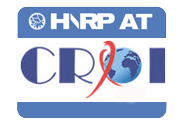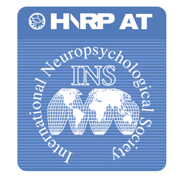
Get Knowledgeable
- HIV is spread through contact with the blood, semen, pre-seminal fluid, vaginal fluids, rectal fluids and breast milk from a person infected with HIV.
- HIV can also be spread through sharing drug injection equipment, such as needles, with someone who has HIV.
- Although not to be confused with cure, treatment is available to prolong lives. HIV medication is called antiretroviral therapy, or ART for short.
In the United States
- More than 1.2 million people in the United States are living with HIV infection, and almost 1 in 7 (14%) are unaware of their infection.[1]
- Gay, bisexual, and other men who have sex with men (MSMa), particularly young African-American MSM, are most seriously affected by HIV.[1]
- African-Americans face the most severe burden of HIV.[1]
- There are about 50,000 new HIV infections per year[2]
- Females are affected too.
- Americans aged 50 and older have many of the same HIV risk factors as younger Americans.
- People aged 55 and older accounted for 26% (313,200) of the 1.2 million estimated HIV infections in the US in 2011.
- In 2010, 44% (1,100) of the estimated 2,500 new HIV infections among people aged 55 and older were among gay, bisexual, or other men who have sex with men (MSM).[4]
Global
- Since the beginning of the epidemic, almost 78 million people have been infected with the HIV virus and about 39 million people have died of HIV[5].
- Globally, 35 million people were living with HIV at the end of 2013[5].
- Sub-Saharan Africa remains most severely affected, with nearly 1 in every 20 adults living with HIV and accounting for nearly 71% of the people living with HIV worldwide[5]
- Heterosexual intercourse remains the epidemic‘s main driving force in sub-Saharan Africa, unlike in the rest of the world where HIV disproportionately affects injecting drug users, commercial sex workers, and men who have sex with men[6].
References Cited
1. Center for Disease Control and Prevention. CDC - Fact Sheets - Resource Library - HIV/AIDS. 2012 [cited 2015 May 12]; Available from: http://www.cdc.gov/hiv/library/factsheets/index.html.
2. Center for Disease Control and Prevention, Estimated HIV incdience in the United Sttes, 2007-2010. HIV Surveillance Supplemental Report, 2012. 17(No. 4): p. 5. PMC
3. Center for Disease Control and Prevention, Estimated HIV incdience in the United Sttes, 2007-2010. HIV Surveillance Supplemental Report, 2012. 17(No. 4): p. 6. PMC
4. Center for Disease Control and Prevention. HIV Among People Aged 50 and Older. 2015 April 12, 2015 [cited 2015 May 12]; Available from: http://www.cdc.gov/hiv/risk/age/olderamericans/index.html.
5. World Health Organization. HIV/AIDS. 2015 [cited 2015 May 12]; Available from: http://www.who.int/gho/hiv/en/.
6. Vinod Mishra, Agrawal Praween, Soumya Alva, Yuan Gu, and Shanxio Wang, Changes in HIV-Related Knowledge and Behaviors in Sub-Saharan Africa. DHS Comparative Reports, 2009. 24: p. 2. PMC



